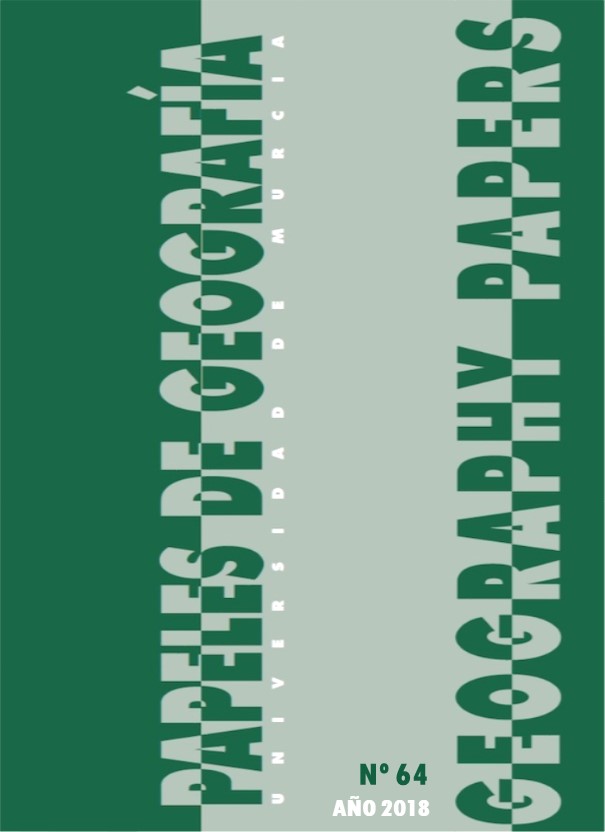City’s periphery, between urban segregation and extensive agriculture. Case Ituzaingó anexo, Córdoba, Argentina
Supporting Agencies
- Consejo Nacional de Investigaciones Científicas y Técnicas (CONICET)
Abstract
The Ituzaingó Anexo neighborhood is located on the Córdoba’s city southeast periphery. Sixteen years ago, the struggle of a mother’s group made visible the environmental conflict that they still live through. This fact became evident when they identified diseases and deaths caused by the environmental effects of agrotoxics in the production of transgenic soybeans. In this work, we wonder how those who decide about the city are also responsible for the environmental damage produced in this sector of society, understanding the relationship of the neighborhood with the configuration of the city. In this way, we analyze the creation of Ituzaingó Anexo as a working class neighborhood in the industrial expansion of the city and later the beginning of the productive model of expansive agriculture. Emphasizing the incompa tibility of uses enabled by zoning in the planning of the city, and the effects of urban and environmental segregation.
Downloads
-
Abstract1091
-
PDF (Español (España))892
References
BARCHUK, A., SUEZ L., Y LOCATI, L. (2017). Cobertura y uso de la tierra en el área periurbana de la ciudad de Córdoba, Argentina. Aportes a la planificación territorial. Revista de la Asociación Argentina de Ecología de Paisajes 7.
BARRETO, M. (2008). La comprensión del problema habitacional desde una perspectiva compleja para su abordaje integral. ULACAV, XIV Encuentro de la Red Universitaria de Cátedras de Vivienda. [CD ROM] Buenos Aires: Edición FADyU-UBA.
BARRETO, M. (2010). El concepto de “hábitat digno” como meta de una política integral de áreas urbanas deficitarias críticas, para la integración social desde los derechos humanos. Revista INVI, 25(69).
BERGER, M. (2013). Cuerpo. Experiencia. Narración. Autoorganización ciudadana en situaciones de contaminación ambiental. Córdoba: Ediciones del Boulevard.
BERGER, M. Y CARRIZO, C. (2016). La palabra del nos-otros. Reflexiones epistemológicas para la superación de las subalternidades en las luchas por derechos. Estudios de Comunicación y Política. Núm. 37, pp. 129-139.
BOCCOLINI, S. (2017). La micro-densifcación emergente de los barrios pericentrales de Córdoba, Argentina Una alternativa sostenible y eficiente para la revitalización de la ciudad construida (Tesis doctoral). Fakultät Architektur und Urbanistik der Bauhaus-Universität Weimar y Facultad de Arquitectura, Urbanismo y Diseño de la Universidad Nacional de Córdoba, Argentina.
CARMAN, M. (2011). Las trampas de la naturaleza. Medio ambiente y segregación en Buenos Aires. Bueno Aires: Fondo de Cultura Económica y CLACSO.
CARMAN, M.; VIEIRA, N. y SEGURA, R. (coord.) (2013). Segregación y diferencia en la ciudad. Quito: FLACSO, CLACSO.
CARRASCO, B. (1927). Plan Regulador y de Extensión. Memoria y expediente urbano. Córdoba: Municipalidad de Córdoba.
CASTELLS, M. (1974). La cuestión urbana. México: Siglo veintiuno editores
CELS (2017). Hábitat digno. Diez propuestas de políticas públicas. Buenos Aires: Asociación Civil Centro de Estudios Legales y Sociales.
DÍAZ TERRENO, F. (2011). Los territorios periurbanos de Córdoba entre lo genérico y lo específico. Revista Iberoamericana de Urbanismo 5: 65-84.
DICHIRO, G. (1999). La justicia social y la justicia ambiental en los Estados Unidos: La Naturaleza como comunidad. Ecología Política. Núm. 17, pp. 105-118.
ESCOBAR, A. (2007). La invención del Tercer Mundo. Construcción y deconstrucción del desarrollo. Caracas: Fundación Editorial el perro y la rana.
GARGANTINI, D. y MARTIARENA, M. (comp.) (2016). Tierra de conflictos. Conflictos urbanos y violaciones al derecho a la ciudad en Córdoba capital. Córdoba: Editorial de la Universidad Católica de Córdoba.
GUATTARI, F. (2015). ¿Que es la ecosofía? Textos presentados y agenciados por Stéphane Nadau. Buenos Aires: Editorial Cactus.
HARVEY, D. (2012). Ciudades rebeldes. Del derecho a la ciudad a la revolución urbana. Madrid: Ediciones Akal.
LEFEBVRE, H. (1974). La producción del espacio. Madrid: Capitán Swing Libros
LEFEBVRE, H. (2011). La noción de totalidad en las ciencias sociales. Telos, 13 (1), 105-124.
LEY PROVINCIA DE CÓRDOBA N° 9164. 2004. Productos químicos o biológicos de uso agropecuario. Boletín oficial de la provincia de Córdoba.
RODRÍGUEZ, E. M. (2014). Trayecto/s de la formación en hábitat desde las Ciencias Sociales. ULACAV, XX Encuentro de la Red Universitaria Latinoamericana de Cátedras de Vivienda. Mendoza: Universidad Nacional de Cuyo.
SABATINI, F. (2006). La segregación social del espacio en las ciudades de América Latina. Banco Interamericano de Desarrollo, Departamento de Desarrollo Sostenible. Disponible en: https://publications.iadb.org/handle/11319/5324
SASSEN, S (2015). Expulsiones. Brutalidad y complejidad en la economía global. Buenos Aires: Katz Editores.
The manuscripts published in Papeles de Geografía are subject to the following terms and conditions:
1. The publishing house of the University of Murcia (Servicio de Publicaciones de la Universidad de Murcia) keeps the copyright of the published manuscripts favouring and allowing the use and distribution of such works under the licence in 2 below.
© Servicio de Publicaciones, Universidad de Murcia, 2011
2. Manuscripts are published electronically under an Attribution Non-Commercial No Derivatives 3.0 Unported Creative Commons Licence Spain (Legal text). Readers are free to copy, use, share and redistribute the material in any medium or format as long as (i) appropriate credit is given to authors and original source (journal, publishing house and URL); (ii) the material is not used for commercial purposes and (iii) this licence and restrictions are stated.
3. Self-archive. Authors are allowed and encouraged to distribute pre-print versions (prior to evaluation) and/or post-print versions (after evaluation and accepted for publication) of their manuscripts. This favours the dissemination and early distribution of scientific knowledge and citing.





